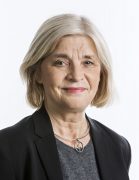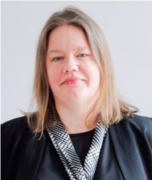EDUCATION. When the semester begins, lessons that need to be held on-site can be given in the faculty’s facilities. In these cases, both teachers and students are responsible for avoiding crowding. All theory-based teaching, however, will continue online this autumn.
Sahlgrenska Academy continues to follow the guidelines and decisions by the Swedish Public Health Agency and the Vice-Chancellor to reduce the spread of the coronavirus.
Sustainable and long-term approach
This past spring, the sudden transition to distance education required an immense amount of effort from the faculty’s teachers. Now that the autumn semester will also heavily involve online solutions, teaching staff need to settle into a sustainable and long-term approach to the new situation.

“We are very aware of how tired everyone was after the spring semester, and we hope that the summer break has allowed everyone to recharge their batteries. We believe we can benefit from the routines, approaches, and good ideas developed by the teaching teams this spring and that this can ease the workload in the coming semester,” says Silvana Naredi, vice dean of undergraduate and master’s education.
“In the midst of this difficult period, it is apparent that many things have worked very well, and we will be able to continue using these when the pandemic has passed. I believe that the creativity we are seeing from teachers will continue to improve our pedagogy for a long time to come.”
Challenging to piece together available facilities
This autumn, all theory-based teaching will continue to be conducted online, but some laboratory work, other practical modules, and certain exams will be provided on campus. By making difficult prioritizations, every program has identified the modules that cannot be conducted online. The faculty has been working to figure out how to use all available facilities so that on-campus teaching can be scheduled in a way that maintains appropriate distancing. Significantly fewer people are allowed in buildings. Signs will indicate where seating is allowed and remind everyone to maintain their distance from others. The students have been informed to only stay on campus while their lessons are taking place, and they are assigned specific entrances and exits to avoid crowding in the corridors.
Welcoming new students

“Naturally, all teachers and students who come to campus must be completely healthy. We have made the preparations to avoid crowding in classrooms and other facilities, and both students and staff must take personal responsibility for maintaining their distance and avoiding crowding,” says Annelie Hyllner, head of the Division of Education at Sahlgrenska Academy’s faculty office.
In addition to the practical modules that must be conducted on-site, certain introductory modules for newly admitted students are permitted in Sahlgrenska Academy facilities.
“We want our students to feel welcomed and for them to be able to develop a bond with their classmates. How the programs solve physical meetings for the new students will vary a lot. One approach can be to conduct assignments and modules in small groups,” says Silvana Naredi.
Consulting with Infectious Disease Control
As was the case this last spring, the faculty’s efforts to reduce the spread of infection within its programs occurs in consultation with Region Västra Götaland’s Infectious Disease Control unit and Healthcare Hygiene at Sahlgrenska University Hospital. The University of Gothenburg currently has no general recommendations about the use of facemasks in its facilities. Instead, it is left up to the individual organizations to decide if and when personal protective equipment is to be used. In consultation with Region Västra Götaland’s Infectious Disease Control unit and Healthcare Hygiene at Sahlgrenska University Hospital, Sahlgrenska Academy has concluded that facemasks and visors should be used for certain teaching modules where it is not possible to maintain appropriate distance. The use of personal protective equipment then becomes part of teaching healthcare hygiene and serves as preparation for the students’ clinical training, since this type of protective equipment has become much more common in health care during the pandemic.
“From what we have heard from Region Västra Götaland, it seems that all planned clinical training will be able to take place. At present, the region does not have any specific COVID-19 departments still in operation, but we must be prepared, naturally, to adapt if the situation changes,” says Annelie Hyllner.
The exam hall on Viktoriagatan will also reopen with limited capacity, which means that digital hall exams (DISA exams) will once again be able to be held at the University of Gothenburg from September 1.
TEXT: ELIN LINDSTRÖM











